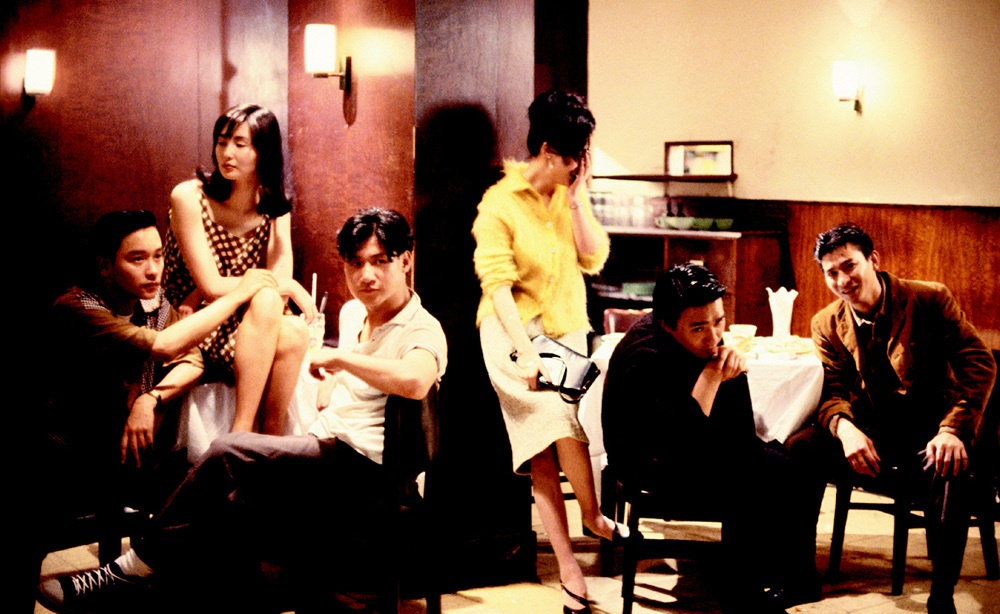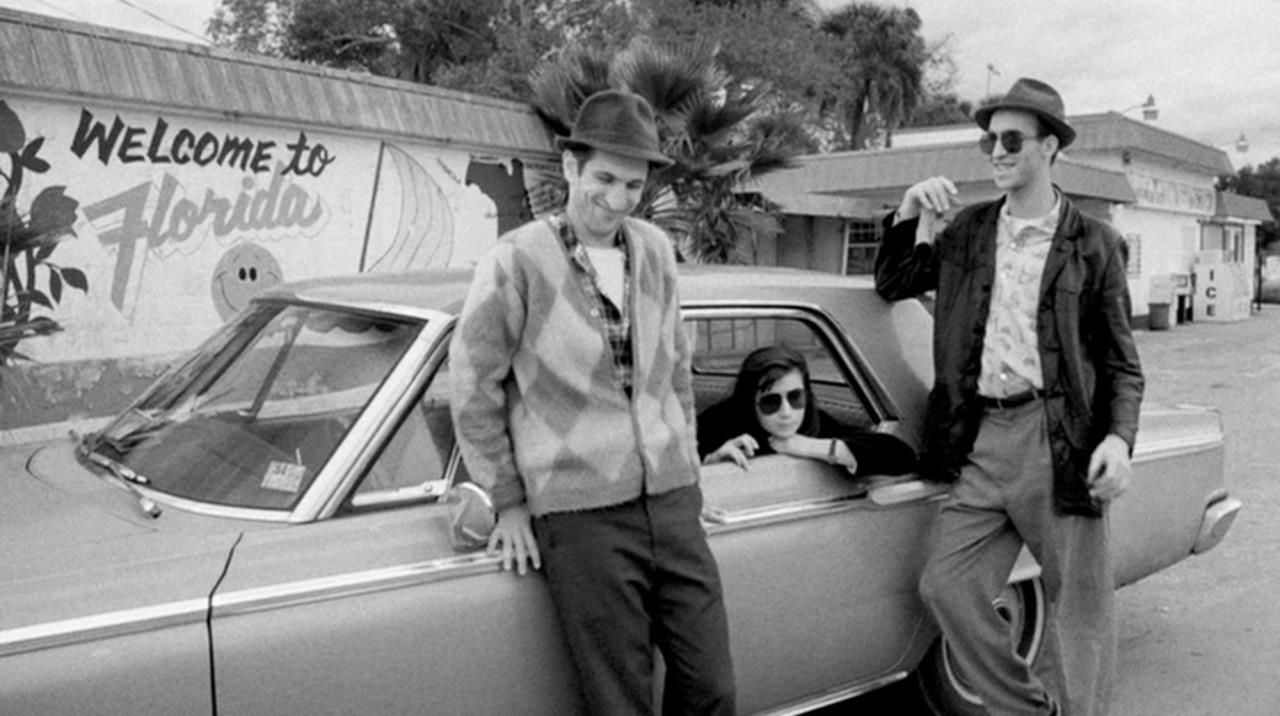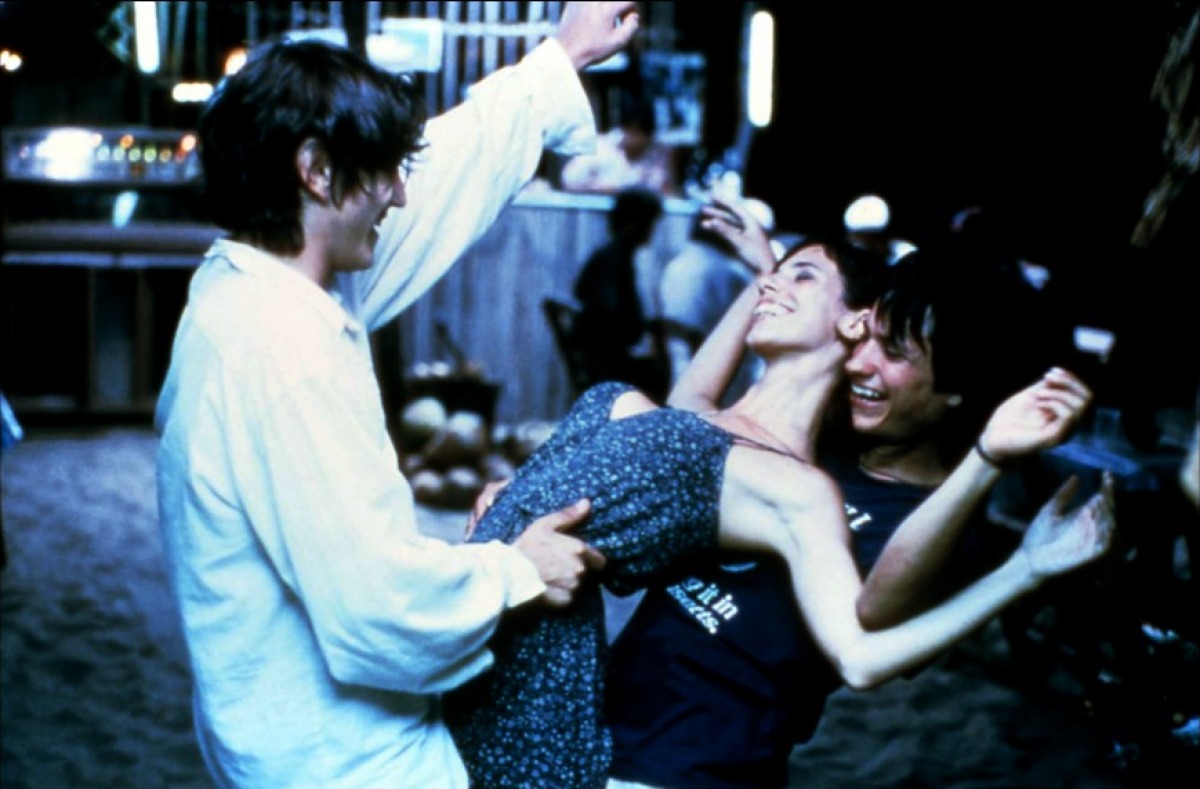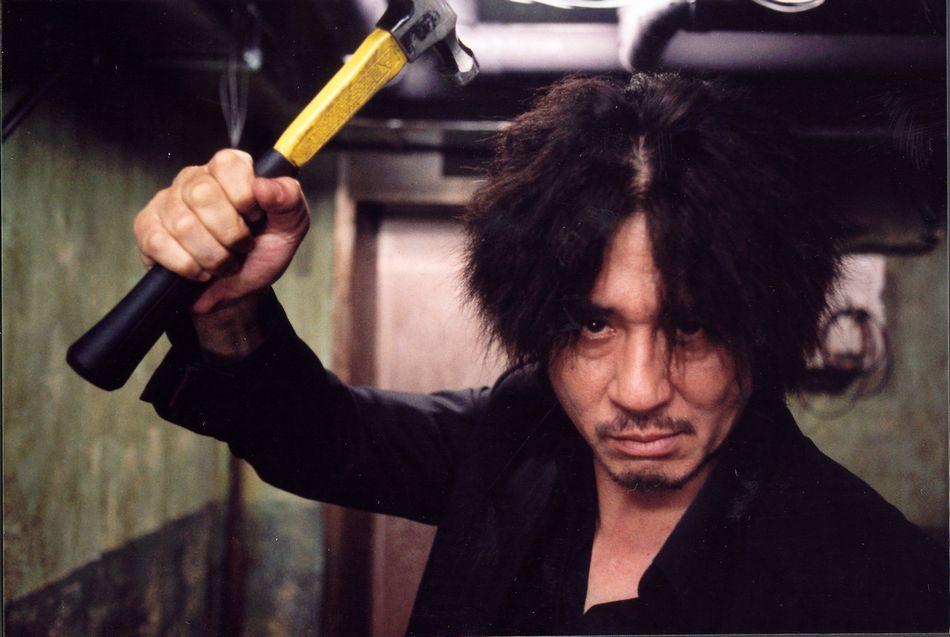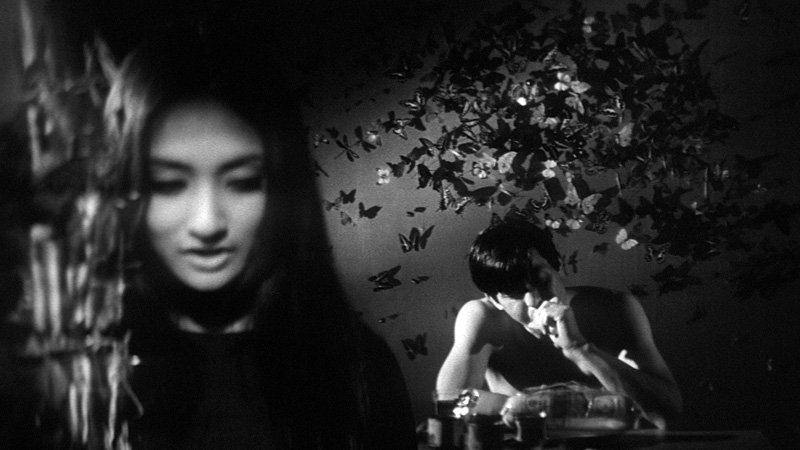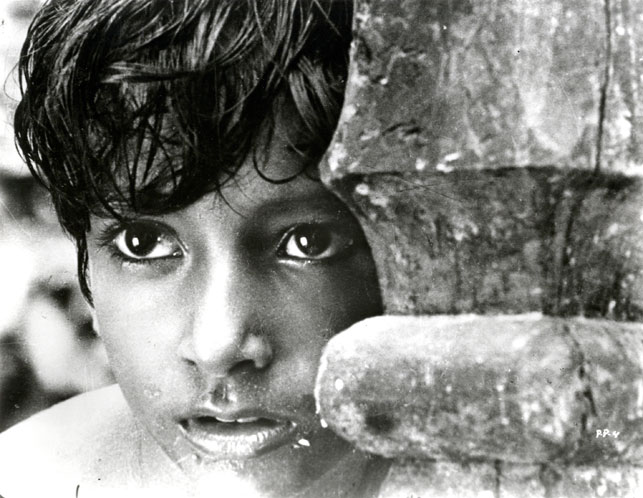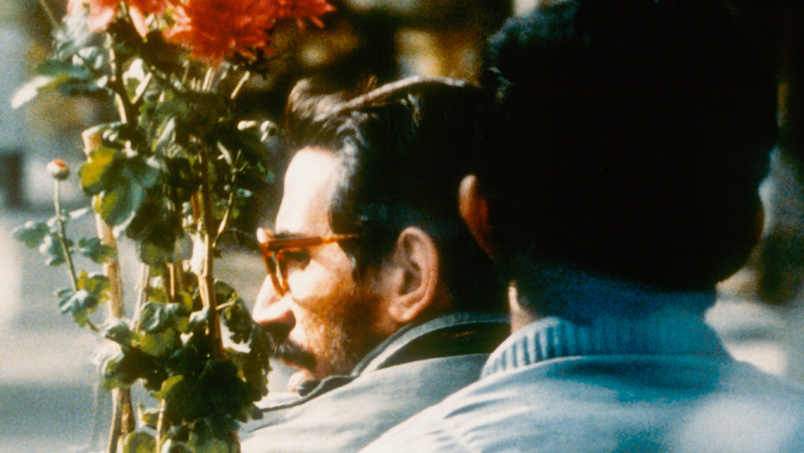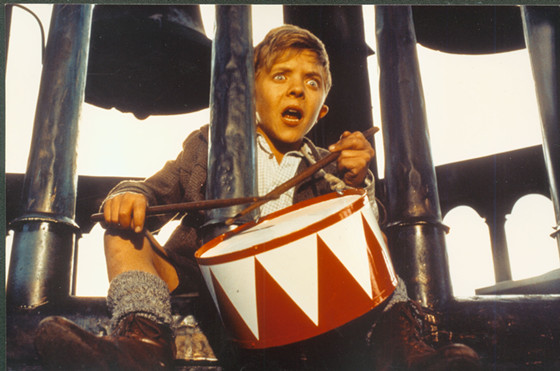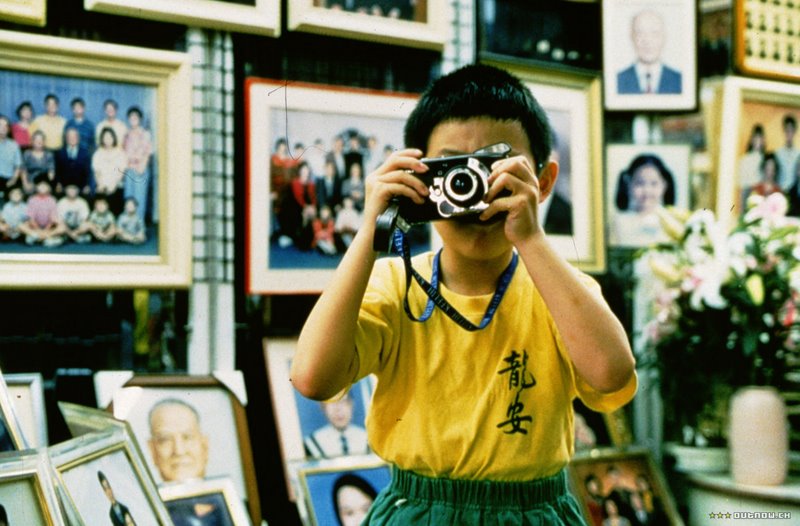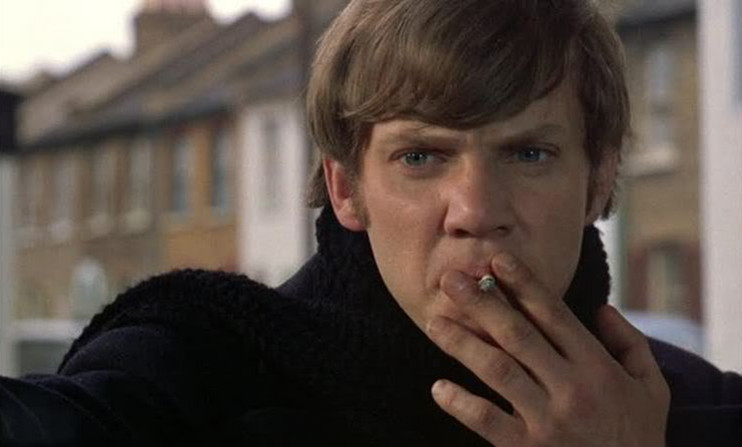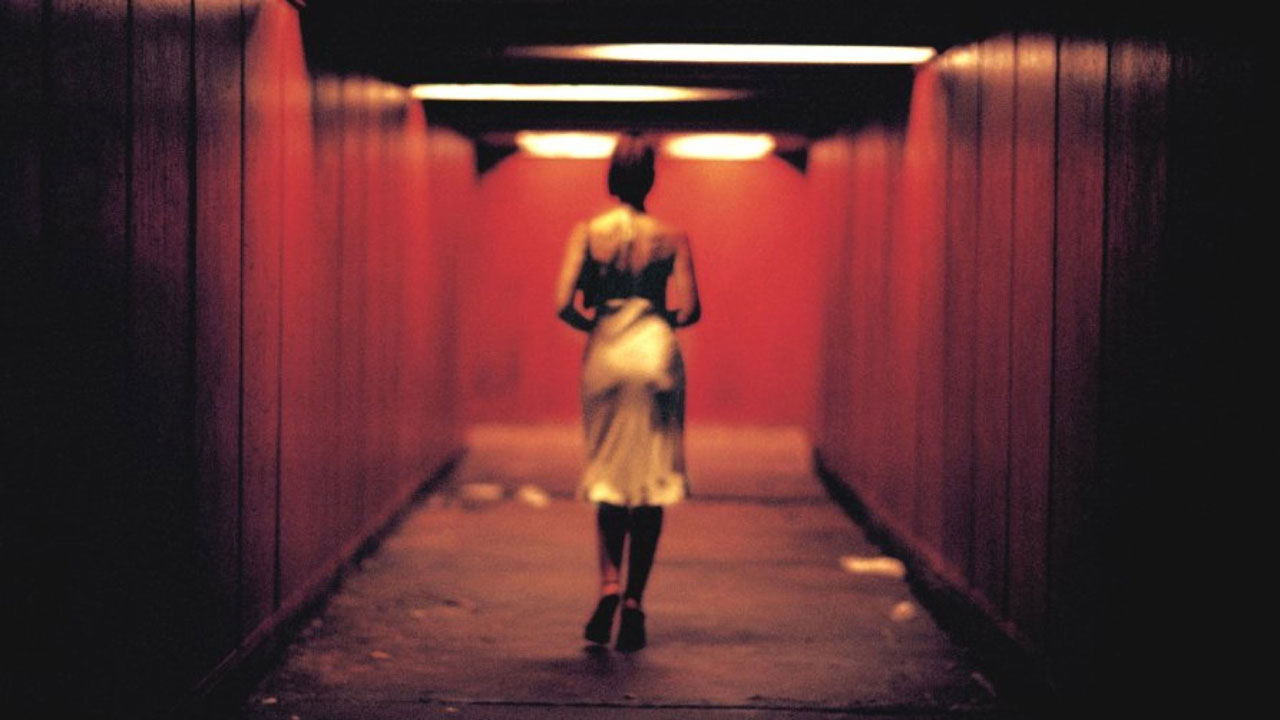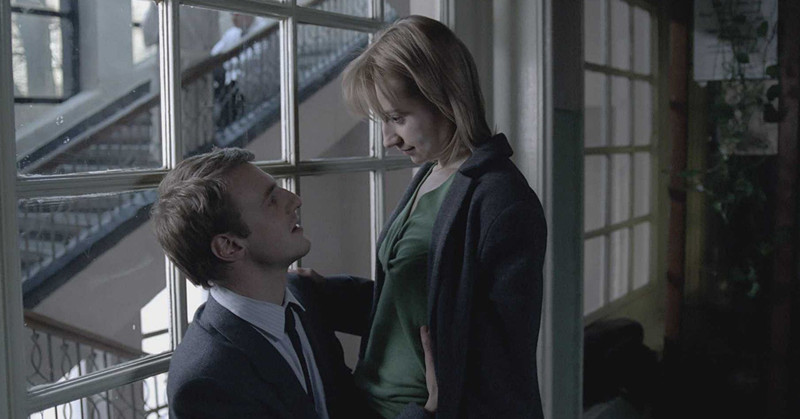Wednesday, July 29, 2015
Monday, July 13, 2015
[專題] 電影色彩學教室:五種基本電影調色料理手法
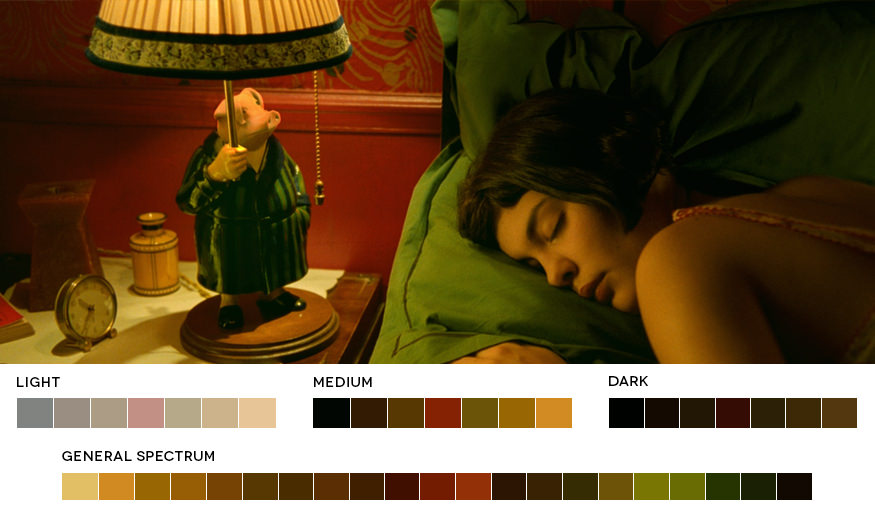
文 / Janettso
在開始基礎教學時,先來介紹一位美國的平面設計師 Roxy Radulescu 所創建的個人網站「Movies in color」。這個網站的特別之處在於擷取電影中各種經典劇照並配上對應色卡,來表現顏色以及電影藝術與造型設計之間的關係。該網站更新的速度非常快,你不只可以從中增加對色彩的敏感度,還可以見習到美學概念用於生活上,像是裝置藝術、排版設計、甚至服裝搭配等等都可以學以致用。
「眼睛為靈魂之窗」之意就在於被賦予的另一種視覺享受。色彩的組合上千萬種,顏色的加總不只是呈現肉眼下的形態,還可以透過這些配色方式了解電影所呈現的氣氛,以及角色們的內心世界。然而,這個部分多數交由電影美術指導們來負責,也偏屬於電影製作後期的階段。現今的電影課程仍多偏向導演或是編劇等熱門職位居多,很少有機會可以接觸與美術指導相關工作性質的知識,因此藉由以下五種基本電影配色模式來了解電影的色彩美學。首先從最基本的架構開始談起。
色相環(The Color Wheel)
 色相環常用於調整色調或是添增效果之時,根據色彩學(Color Theory)中的三原色(Primary Colors)、三間色(Secondary Colors)以及六個再間色(Tertiary Colors)而定義出的配色工具。色相環是由RYB上的十二種顏色所組成,亦稱減色法(Subtractive Color)。RYB顏色模式中主要以紅色、黃色、藍色為主,亦指三原色。三間色為綠色、橙色、紫色,可以藉由三原色混合而成。剩下的六個再間色則由原色與相鄰的三間色混合而成。一般而言,我們多以右半部的暖色調系列來代表歡樂及活力,而左半部的冷色調系列則代表安詳及冷靜。接下來就進入我們的重點「五種基本電影配色模式」。
色相環常用於調整色調或是添增效果之時,根據色彩學(Color Theory)中的三原色(Primary Colors)、三間色(Secondary Colors)以及六個再間色(Tertiary Colors)而定義出的配色工具。色相環是由RYB上的十二種顏色所組成,亦稱減色法(Subtractive Color)。RYB顏色模式中主要以紅色、黃色、藍色為主,亦指三原色。三間色為綠色、橙色、紫色,可以藉由三原色混合而成。剩下的六個再間色則由原色與相鄰的三間色混合而成。一般而言,我們多以右半部的暖色調系列來代表歡樂及活力,而左半部的冷色調系列則代表安詳及冷靜。接下來就進入我們的重點「五種基本電影配色模式」。
互補色模式(Complementary Color Scheme)
 互補色是指兩種對應的顏色所形成的對比效果,亦為現今最廣泛的配色模式。以暖色系與冷色系的兩種顏色來強調對比度以及提升鮮豔、突出的效果。最常見的例子為橙色與藍色、藍綠色(Teal),這也是多數的好萊塢大片都以這兩種顏色作為電影色彩效果的原因。然而,使用互補色模式時須適度調整其飽和度,使該對比效果是令人感到賞心悅目而非刺眼。
互補色是指兩種對應的顏色所形成的對比效果,亦為現今最廣泛的配色模式。以暖色系與冷色系的兩種顏色來強調對比度以及提升鮮豔、突出的效果。最常見的例子為橙色與藍色、藍綠色(Teal),這也是多數的好萊塢大片都以這兩種顏色作為電影色彩效果的原因。然而,使用互補色模式時須適度調整其飽和度,使該對比效果是令人感到賞心悅目而非刺眼。

上兩圖為電影《艾蜜莉的異想世界》(Amélie)劇中的對應色卡,是一種典型的紅色配綠色之對應效果。通常兩種對比的色彩象徵衝突行為,透過外在的互補色彩之呈現來表示角色內心正處於矛盾或是身心交瘁的狀態。
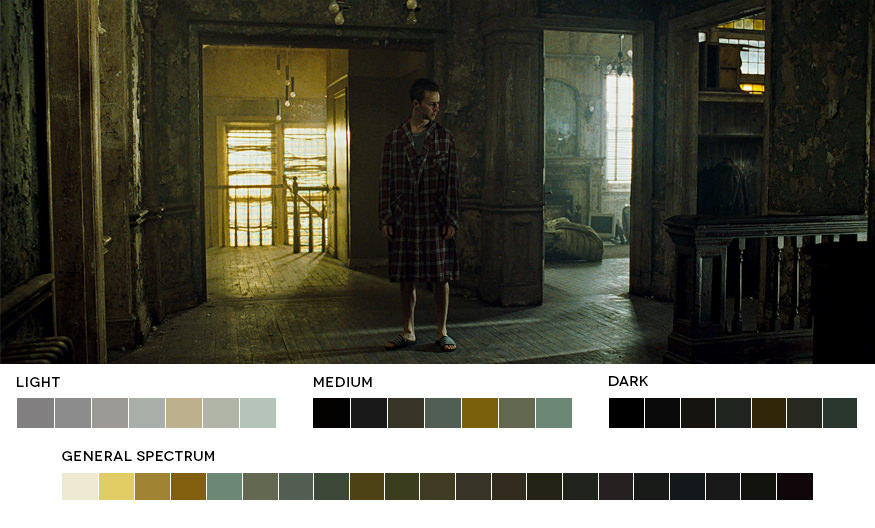
電影《鬥陣俱樂部》(Fight Club)就為橙色與藍綠色之對應搭配作了完美的詮釋。陰暗的部分以藍綠色表示,明亮的部分就以橙色來呈現,就像人的內心充滿著各種正、負面思維來抨擊一個完整的個體。
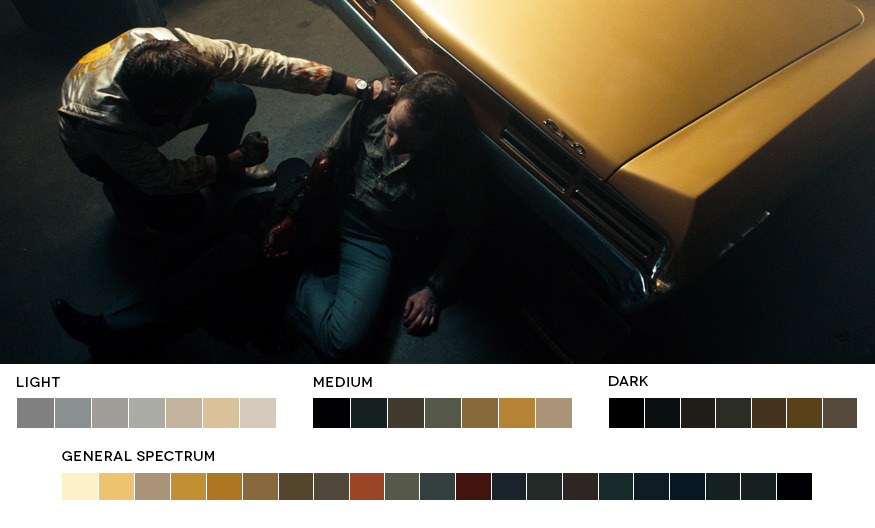
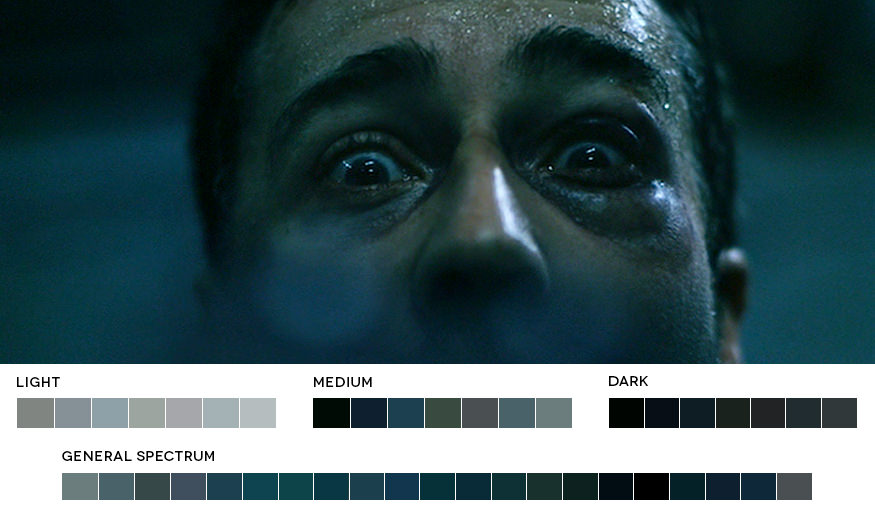
電影《落日車神》(Drive)與上一個圖所呈現的效果有異曲同工之妙。然而,互補色並非總是如此明顯,也與使用的對比程度有些許關聯。以電影《鬥陣俱樂部》的另一幕場景為例,外觀看似全以藍綠色作為色彩效果,仔細地觀察後會發現偏橙色的膚色與其藍綠色的背景相對。
相似色模式(Analogous Color Scheme)
 相似色是指以色相環上鄰近的顏色之組成來呈現電影中整體色彩的協調感。彼此之間的色彩結合較為柔性,且非為暖色調或冷色調,因此並不會表現出像互補色模式那樣強烈與具張力的效果。通常以相似色作為電影中的風景色調來呈現自然、柔和之感。最常見的模式是選擇一個主色系,並挑選與其相近的色彩作搭配,最後再以黑色、白色以及灰色作襯托。
相似色是指以色相環上鄰近的顏色之組成來呈現電影中整體色彩的協調感。彼此之間的色彩結合較為柔性,且非為暖色調或冷色調,因此並不會表現出像互補色模式那樣強烈與具張力的效果。通常以相似色作為電影中的風景色調來呈現自然、柔和之感。最常見的模式是選擇一個主色系,並挑選與其相近的色彩作搭配,最後再以黑色、白色以及灰色作襯托。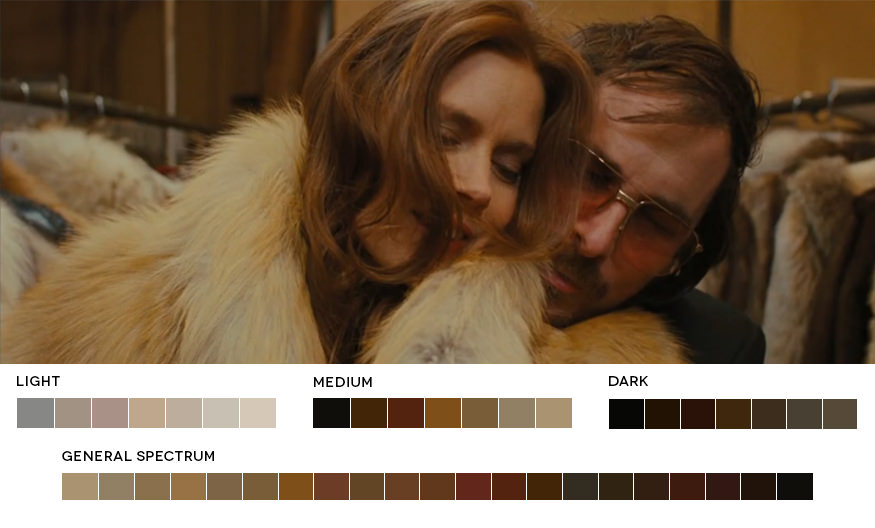
電影《瞞天大佈局》(American Hustle)中的一幕場景以紅色、橙色、棕色與黃色彼此色彩相接使電影的整體色調偏向暖和的氛圍,畫面幾乎不含一絲緊張之氣氛。
三等分配色模式(Triadic Color Scheme)
 三等配色是指三種顏色於色相環上以120度隔開,雖然整體色彩的飽和度不會太高,但一樣給人生氣勃勃之感。然而,三等分配色為電影中最冷門的配色模式,不過適當使用仍會展現出令人驚豔的效果。
三等配色是指三種顏色於色相環上以120度隔開,雖然整體色彩的飽和度不會太高,但一樣給人生氣勃勃之感。然而,三等分配色為電影中最冷門的配色模式,不過適當使用仍會展現出令人驚豔的效果。
尚盧高達(Jean-Luc Godard)採用三等分配色模式來呈現其1964年電影《狂人彼埃洛》(Pierrot le fou) 的整體色調。
補色分割模式(Split-Complementary Color Scheme)
 補色分割相似於互補色的對應關係,但兩者之間的差別在於補色分割是以主色及其對應之兩側顏色作結合。一樣具有強烈的對比度,但張力的效果較不顯著。
補色分割相似於互補色的對應關係,但兩者之間的差別在於補色分割是以主色及其對應之兩側顏色作結合。一樣具有強烈的對比度,但張力的效果較不顯著。
柯恩兄弟(Coen brothers)之電影《即刻毀滅》(Burn After Reading)中一幕場景就以紅色及其對應之綠色與藍綠色來呈現。
矩形配色模式(Tetradic Color Scheme)
 矩形配色是由兩組互補色所構成,通常具有五光十色之繽紛感,但至少有一種主色來突顯其效果。
矩形配色是由兩組互補色所構成,通常具有五光十色之繽紛感,但至少有一種主色來突顯其效果。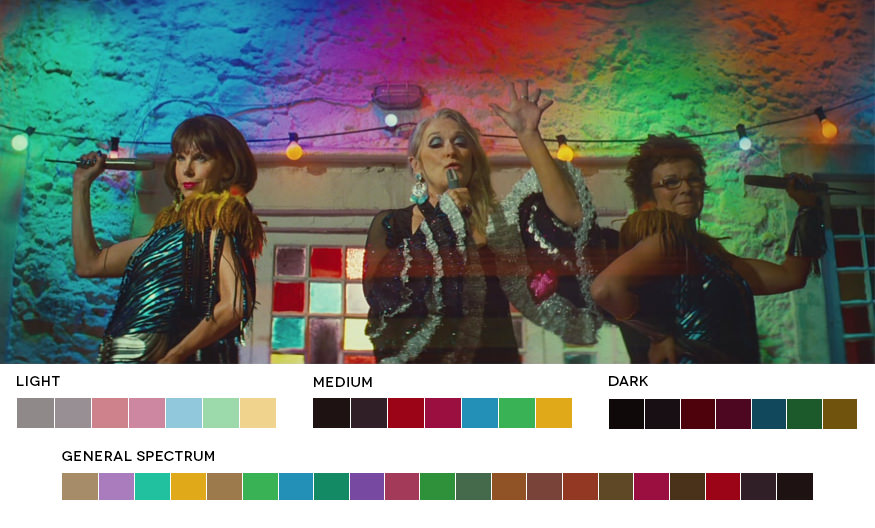
電影《媽媽咪呀!》(Mamma Mia)使用了矩形配色模式來呈現其派對場景,為該場景展現出良好的協調感,而非淪落似迪斯可舞廳(Disco)樣俗不可耐之貌。
除此之外,近來多數電影所呈現的色調以橘色與藍綠色等互補色為居多。橙色多用於明亮及肌膚之處,而藍綠色則用於陰暗之處。

根據電影《心靈角落》(Magnolia)中的場景顯現出好萊塢對該模式的偏愛。以橙色為置中色,強調其臉部的肌膚,而藍色則退至後方陰影處作為襯托。
這次的介紹先告一段落,希望讀完這篇的你們對電影色彩有基礎的認識,之後會更深入探討電影色彩的運用。
[資料來源:Movies in Color, Cinema 5D]
Thursday, July 9, 2015
Wednesday, July 8, 2015
18 Important Film Movements Every Movie Buff Should Know
06 April 2015 Features, Other Lists by Anthony Crossland
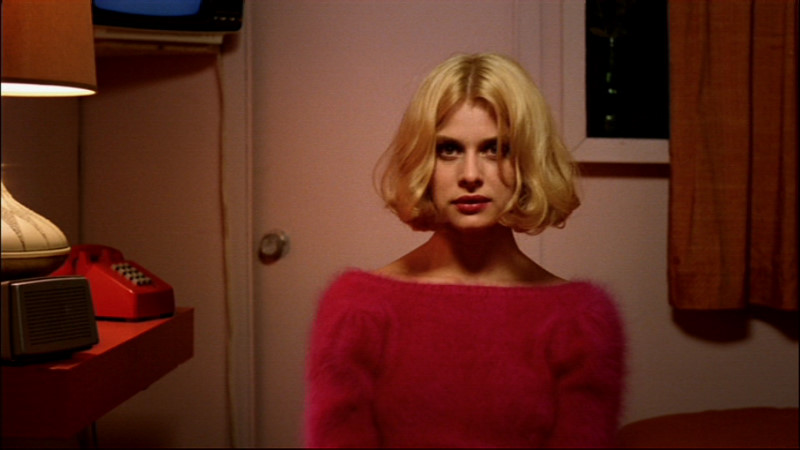
A film movement is a wave of films usually following a particular trend in cinema of the time. Most trending movements in cinema are regional but influence world cinema. These films have cultural origins usually influenced by national tragedy, popular culture, or social issues.
Experimental techniques can be used to create the innovating filming styles. Boundaries in editing are also pushed to the limit at times to give these films a unique identity. These innovating films impact Hollywood and are very important in not only the history but also the future of cinema.
1. German Expressionism
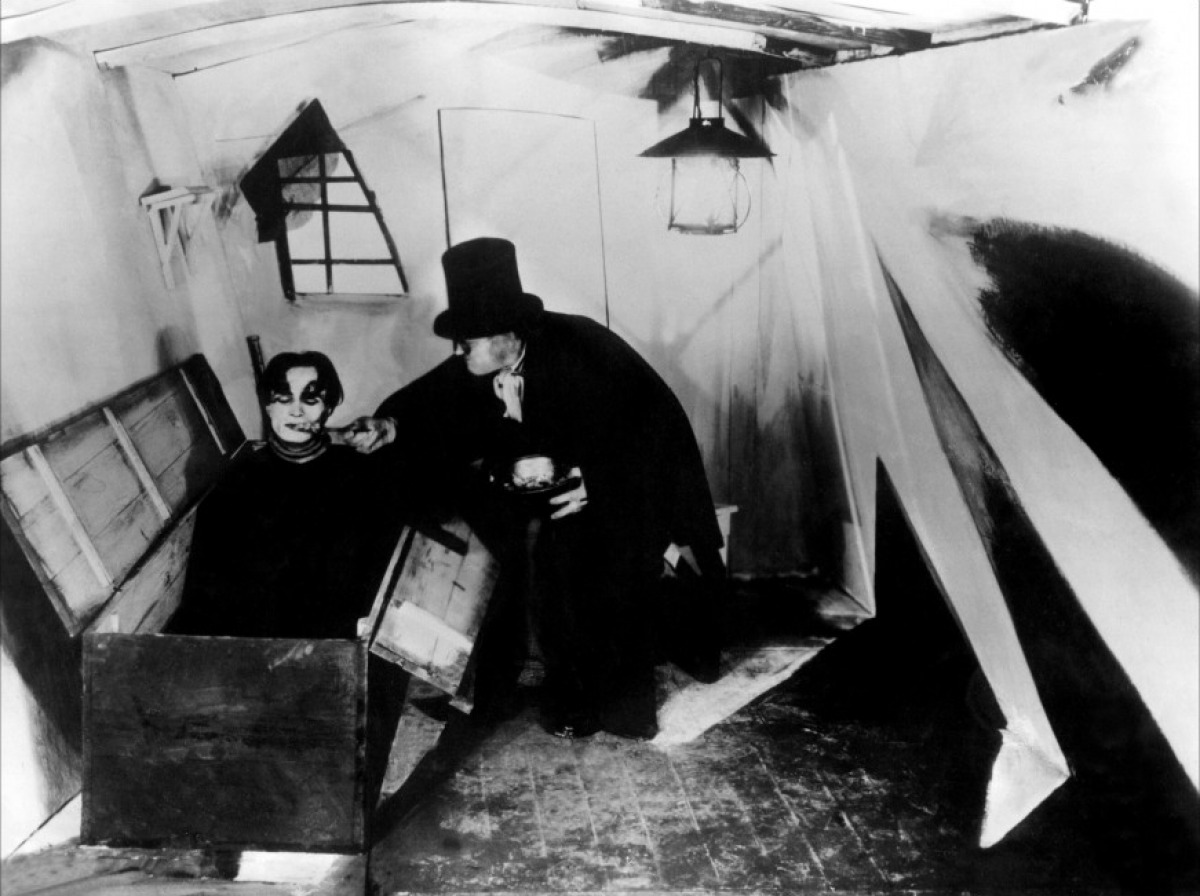
During the First World War, foreign films were not allowed into Germany. A result that would help grow the German film industry. After the war the German economy was struggling. Instead of vacations, people began to go to the cinema, which was a cheap way to escape. A similar boom to the golden age of Hollywood caused by the great depression.
The films were silent and in black and white due to the era. Sometime filmmakers tinted some scenes in a colour such as yellow to give it a different mood. The art design, style of the actors and use of shadows made the films look surreal, similar to the surrealist paintings of the time. Because of the experimentation in art, it’s speculative that a lot of filmmakers and artists in Europe were experimenting with drugs at that time.
Sadly some of the films from this time are lost. Studios didn’t preserve films in secure temperature controlled warehouses as used today. Documentation and photographs confirm these films once existed. One of the most famous German expressionist films, “Metropolis” (1927 dir. Fritz Lang), had been restored, however in 2005 a reel with more footage was found in New Zealand and in 2008 another reel was found in Buenos Aires, Argentina. The last restoration was in 2010.
Major Figures:
F.W. Murnau
Fritz Lang
G.W. Pabst
Robert Wiene
Notable Films in existence today:
“Nosferatu, a Symphony of Horror” (1922 dir. F.W. Murnau)
“The Cabinet of Dr. Caligari” (1920 dir. Robert Wiene)
“The Golem: How He Came into the World” (1920 dir. Carl Boese and Paul Wegenar)
“Metropolis” (1927 dir. Fritz Lang)
“M” (1931 dir. Fritz Lang)
“Pandora’s Box” (1929 dir. G.W. Pabst)
German Expressionism was killed off when the Nazi regime took power but its influence would live on. Frtiz Lang and F. W. Murnau went on to work in Hollywood. The traits of German expressionism can be seen in Alfred Hitchcock’s early silent work. Many of Tim Burton’s films are thought to be modern expressionism.
Werner Herzog directed “Nosferatu the Vampyre” in 1979 as a tribute to Nosferatu and in 2000 the making of F.W. Murnau’s Nosferatu was fictionalized into the film: “Shadow of the vampire”. “Metropolis” inspired the art direction on futurist films such as “Blade Runner” (1982 dir. Ridley Scott) as well as others.
George Lucas also took inspiration from Metropolis for “THX 1138” (1971) and Star wars. In 1984 music producer Giorgio Moroder revamped Metropolis. The New restoration was colourized and rescored with 1980’s pop music.
Metropolis was even adapted into a manga and in 2001 a feature length anime film titled Metropolis was adapted from the manga. Francis Ford Coppola wanted to do a live action remake but has since abandoned the project after several attempts.
It’s very possible that these films will continue to not only inspire but also even be remade. And there’s still the hope that missing scenes and lost films will resurface somewhere in the world. Thankfully The Friedrich Wilhelm Murnau Foundation will be active in continuing to restore these important films.
“I was called the greatest director in Europe, but I was just a hard worker.” – Fritz Lang
Check out our essential German Expressionism film list.
2. French New Wave
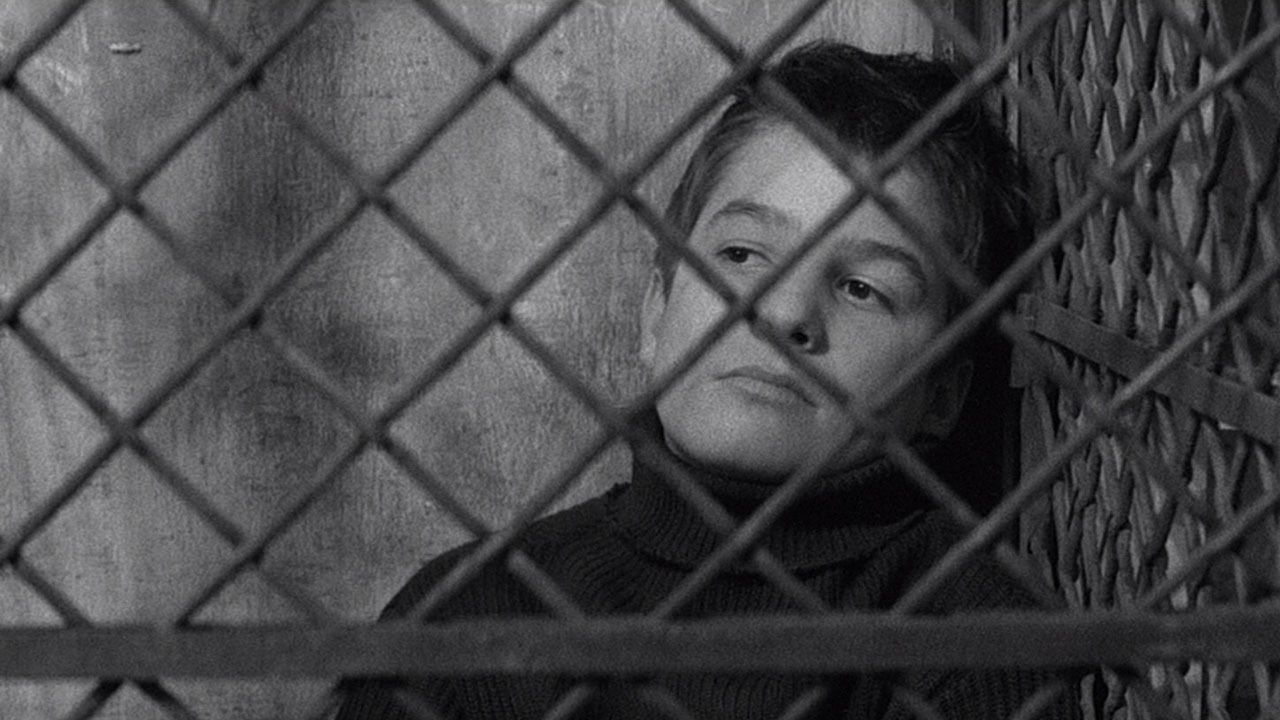
Young film critics in the late 1950s writing for Cahiers du cinema, had a wide knowledge of films and were growing tiresome of the monotonousness industry. Keen on innovation, they got to work. The group consisted of friends and help out one another to achieve the goal of changing cinema. Other French filmmakers soon followed.
The films had low budgets but were stylized with tracking shots, fast pans and handheld camera work and most famously, Jump cuts. Many films and Hollywood worked on a formula of editing. The French new wave broke the rules and would jump cut scenes to change the timing and give the film more energy.
Major Figures:
Francois Truffaut
Jean-Luc Godard
Eric Rohmer
Claude Chabrol
Jacques Rivette
Notable Films:
“The 400 Blows” (1959 dir. Francois Truffaut)
“Jules and Jim” (1962 dir. Francois Truffaut)
“Breathless” (1960 dir. Jean-Luc Godard)
“Le beau Serge” (1958 dir. Claude Chabrol)
“Sign of Leo” (1962 dir. Eric Rohmer)
“Paris Belongs to Us” (1961 dir. Jacques Rivette)
French new wave didn’t die but evolved and changed film editing. Some modern Hollywood films now feature jump cuts. In 1983, Breathless had a modernised American remake but was met with mix reviews. However, Quentin Tarantino is a fan of the remake and has even named his production company A Band Apart films which is a play on words of the French new wave film, “Bande a part” (1964 dir. Jean-Luc Godard).
Jean-Luc Godard continues to make films in a similar style but unfortunately the once innovating filmmaker has progressed in his exhibit of Marxist ideology and xenophobia towards Americans.
“The film of tomorrow will not be directed by civil servants of the camera, but by artists for whom shooting a film constitutes a wonderful and thrilling adventure.” – Francois Traffaut
Check out our essential French New Wave film list.
3. New Hollywood

In the 1960s, the United States was radically changing. The old Hollywood studio system had set formulas for filmmaking, which couldn’t even compete with television sitcoms of the time. And with the war in Vietnam and race riots, people grew tired of films like “The sound of music”. Hollywood was loosing money and filmmakers who had gone to film school and watched foreign films started directing new Hollywood.
There was no set style, just influences from foreign films. These films were not for the entire family. Promiscuous sex, drugs and at times violence became apart of these films. The films didn’t have glamorous aesthetics and were gritty.
Major Figures:
Martin Scorsese
Terrence Malick
John Cassavetes
Francis Ford Coppola
Mike Nichols
Arthur Penn
Notable Films:
“Taxi Driver” (1976 dir. Martin Scorsese)
“Dog Day Afternoon” (1975 dir. Sidney Lumet)
“Easy Rider” (1969 dir. Dennis Hopper)
“The Graduate” (1967 dir. Mike Nichols)
“Bonnie and Clyde” (1967 dir. Arthur Penn)
“Midnight Cowboy” (1969 dir. John Schlesinger)
“Two-Lane Blacktop” (1971 dir. Monte Hellman)
“Badlands” (1973 dir. Terrence Malick)
“The Deer Hunter” (1978 dir. Michael Cimino)
“The Killing of a Chinese Bookie” (1976 dir. John Cassavetes)
“The Conversation” (1974 dir. Francis Ford Coppola)
New Hollywood pushed both American independent and Hollywood films. Hollywood continues to make a few great thought provoking gritty films each year and take influence from world cinema as well as influencing films across the world. American new wave never stopped, its just not new.
“You don’t make pictures for Oscars.” – Martin Scorsese
Check out our essential New Hollywood film list.
4. Italian Neo-Realism
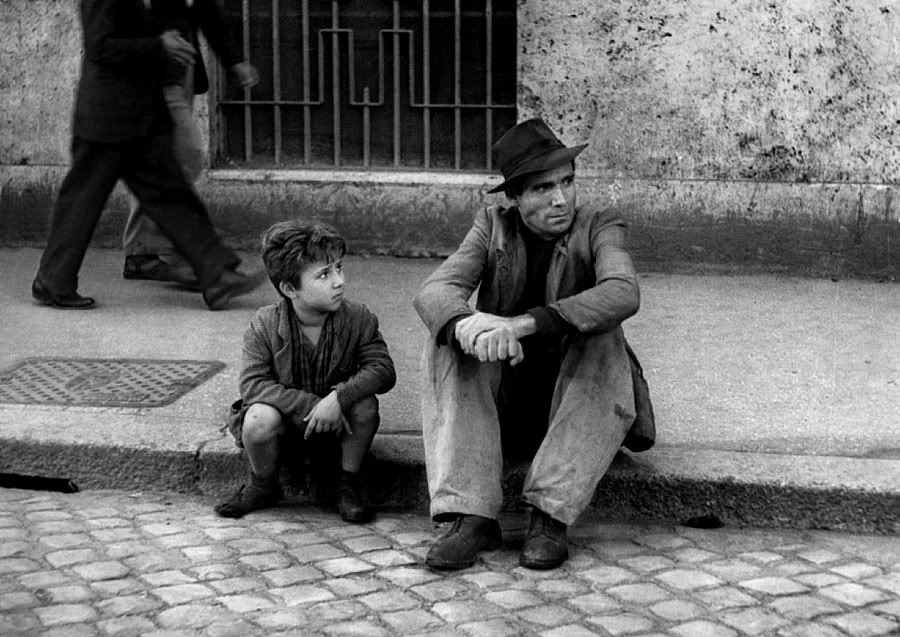
After the Second World War Italy was in ruins. With an attitude that began to hate happy go luck films from Hollywood, filmmakers began making poetic realism films.
These films wouldn’t be afraid to show realistic and gritty locations. The stories didn’t need to have a happy ending. Poverty, crime, simplistic joys and sadness were seen as realistic and that’s what was portrayed.
Major Figures:
Federico Fellini
Roberto Rossellini
Vittorio De Sica
Luchino Visconti
Notable Films:
“Rome, Open City” (1945 dir. Roberto Rossellini)
“The Bicycle Thieves” (1948 dir. Vittorio De Sica)
“I Vitelloni” (1953 Federico Fellini)
“Umberto D.” (1952 dir. Vittorio De Sica)
“La Terra Trema” (1948 dir. Luchino Visconti)
The Italian neo realist filmmakers continued working in the Italian film industry and later were involved with co-productions with the French new wave artists whom they had helped inspire.
A big fan of Neo realism is Martin Scorsese who not only made a documentary about neo realism but also has made mainstream realistic and gritty films inspired by neo realism. Italian neo realism has helped the French new wave and new Hollywood and continues to influence modern cinema.
“I’ve lost all my money on these films. They are not commercial. But I’m glad to lose it this way. To have for a souvenir of my life pictures like Umberto D. and The Bicycle Thief.” – Vittorio De Sica
Check out our essential Italian Neo-Realism film list.
5. Cinema du look
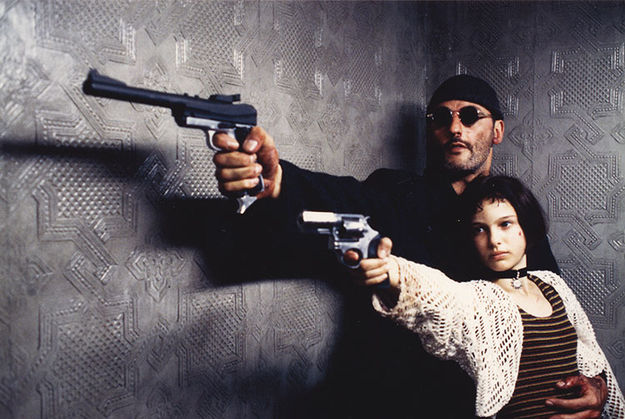
The 1980s culture changed a lot. Video games, fashion, adverts and music videos became very important in 1980s and early 90s pop culture. Even with government support to help boost France’s film industry, filmmakers still had to work their way up on heavily stylized and colourful music videos and adverts. Three young stylised French directors made films which critics began calling a movement of cinema du look.
Style was used to make the films look good. Most films were very colourful just as the current adverts or music videos were. Where as movements before were focused on story, these filmmakers wanted to make their films look cool and their charters at times looked like pop stars. Modern pop culture was interweaved and dramatic looks were abandoned.
Major Figures:
Jean-Jacques Beineix
Luc Besson
Leos Carax
Notable films:
“Betty Blue” (1986 dir. Jean-Jacques Beineix)
“Les Amants du Pont-Neuf” (1991 dir. Leos Carax)
“Leon: The Professional” (1994 dir. Luc Besson)
“La Femme Nikta” (1990 dir. Luc Besson)
The words cinema du look can be used for films today. Bright looking films have seemed to not only have great posters and trailers but also out sell story driven dramas however Star treks lens flares is not where cinema du look lives on. Spike Lee’s “Do the Right Thing” (1989) is a good example.
It’s possible that it was either influenced by the on going movement or took similar inspirations for style. “Do the Right Thing”, then influenced later films in the movement like Leos Carax’s Les Amants du Pont-Neuf (1991). Luc Besson continues to make films and continues to create wonderful ascetics.
“I think we have the wrong notion of commercial and intellectual or artistic film. Because all films are commercial.” – Luc Bensson
Check out our essential Cinema du look film list.
6. Dogme 95
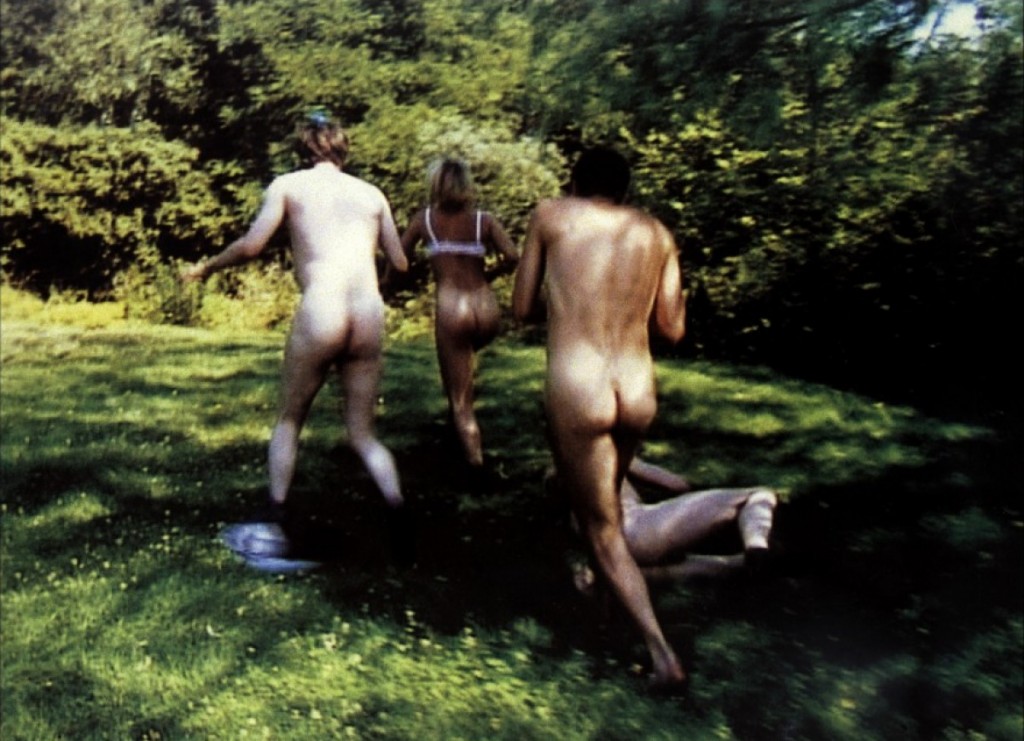
Dogme 95 is one of the few movements to have an official set of rules documented in a manifesto. The Manifesto was written and signed by directors Lars von Trier and Thomas Vinterberg. Dogma, as in a set of principles and the number 95 as in the year.
It was an update of a 1954 article wrote by French new wave director Francois Traffaut. All films had to be approved to be considered apart of the Dogme 95. Although dogma 95 started in Denmark the movement was worldwide.
The style was set from the rules known as the “vow of chastity”. But rules were broken and confessions were made. One of the original rules was to only use 35mm film, which was then changed to videotape. Films were shot handheld without filters and although broken on many occasions, the rules said to shoot on location, with no added sound, lights or props. That caused these films have somewhat of a documentary style.
As for story, genre movies were a no no and so were superficial actions like murder. The other rules stated that the telling of the location the film was set in was forbidden and so was the director to be credited. Although the secret is out and we now know which directors take credit.
Major Figures:
Lars von Trier
Thomas Vinterberg
Notable Films:
Dogma 1 “The Celebration” (Denmark 1998 dir. Thomas Vinterberg)
Dogma 2 “The Idiots” (Denmark 1998 dir. Lars von Triee)
Dogma 4 “The king is Alive” (Denmark 2001 dir. Kristian Levring)
Dogma 6 “Julien Donkey-Boy (USA 1999 dir. Harmony Korine.
The movement is now over as of 2005 but the filmmakers around the world that took part have moved on and keep making films. Natural light, hand held shots and documentary style films are more popular. One important thing dogme 95 taught us was that a good story could survive a low budget, something that has inspired new and veteran filmmakers.
“Basically, I’m afraid of everything in life, except filmmaking.” – Lars von Trier
7. Hong Kong New Wave
Whilst most films in China were made in Mandarin Chinese and filmed on stages, a few Cantonese speaking Hong Kong filmmakers who had studied European films, decided to break apart from the mainstream. The culture and history of Hong Kong is very different from the rest of China and these filmmakers show it.
The new wavers made films grittier and in their natural Chinese dialect. They were inspired by Italian and French cinema and used real locations. They pushed for their own identity. A lot of films were thrilling crime films about the Triad gangs or Martial art films. Those that were of a different genera like comedy or romance would have a fast energy like an action film.
Major Figures:
Notable Films:
“Boat People” (1981 dir. Ann Hui)
“Days of Being Wild” (1990 dir. Wong Kar-Wai)
“A Better Tomorrow” (1986 dir. John Woo)
“The Butterfly Murders” (1979 dir. Tsui Hark)
“Days of Being Wild” (1990 dir. Wong Kar-Wai)
“A Better Tomorrow” (1986 dir. John Woo)
“The Butterfly Murders” (1979 dir. Tsui Hark)
This is another movement that never really died. Hong Kong cinema is now a big industry in world cinema and inspires action films across the globe. Without this movement, Hong Kong would not have such incredible films as it does to days, which have inspired Quentin Tarantino.
“My films are never about what Hong Kong is like, or anything approaching a realistic portrait, but what I think about Hong Kong and what I want it to be.” – Wong Kar-Wai
8. No Wave
No wave wasn’t just a film movement but also a music and art movement by a group of young creative people living on the Lower East Side of New York City. Money was tight but their minds were free.
The films were mostly made on either Super 8 or 16mm film in a guerrilla filmmaking style inspired by French new wave. The stories were transgressive. It was a great practice for the filmmakers who would go on to have successful careers. Vincent Gallo and Steve Buscemi both got their start by acting in no wave films.
Major Figures:
Amos Poe
Jim Jarmusch
Jim Jarmusch
Notable Films:
“Rome ’78” (1978 dir. James Nares)
“Subway Riders” (1981 dir. Amos Poe)
“Stranger Than Paradise” (1984 dir. Jim Jarmusch)
“Subway Riders” (1981 dir. Amos Poe)
“Stranger Than Paradise” (1984 dir. Jim Jarmusch)
These films boosted American independent cinema and helped push trasngresive films. Jim Jarmusch and Amos Poe continue to work. Vincent Gallo went on to direct a few transgression films after the movement had finished. They didn’t wait for a studio, they just did it their way and inspired filmmakers to not focus on mainstream subjects. With a do-it-yourself attitude it was the precursor in American independent cinema to Mumblecore.
“When I left Ohio when I was 17 and ended up in New York and realized that not all films had the giant crab monsters in them, it really opened up a lot of things for me.” – Jim Jarmusch
9. Nuevo Cine Mexicano
New Mexican cinema is a current ongoing wave of films and filmmakers coming from Mexico that began in the early 1990s. These films stay away from the typical Narcoculture and instead take inspiration from American and European films.
The films focus on person expression and changed Mexican cinema to a serious force in world cinema. They have a flare of Mexican culture, realism and romanticism.
Major Figures:
Notable Films:
“Danzon” (1991 dir. Maria Novaro)
“The Devil’s Backbone” (2001 dir. Guillermo del Toro)
“Amores Perros” (2000 dir. Alejandro Gonzalez Inarritu)
“Battle in Heaven” (2005 dir. Carlos Reygadas)
“Y Tu Mama Tambien” (2001 dir. Alfonso Cuaron)
“Biutiful” (2010 dir. Alejandro Gonzalez Inarritu)
“Japan” (2002 dir. Carlos Reygadas)
“The Devil’s Backbone” (2001 dir. Guillermo del Toro)
“Amores Perros” (2000 dir. Alejandro Gonzalez Inarritu)
“Battle in Heaven” (2005 dir. Carlos Reygadas)
“Y Tu Mama Tambien” (2001 dir. Alfonso Cuaron)
“Biutiful” (2010 dir. Alejandro Gonzalez Inarritu)
“Japan” (2002 dir. Carlos Reygadas)
These films are still being made and many directors are making their way and working in mainstream Hollywood. It is influencing the film world with a Mexican flare and helping to grow Mexicos film industry.
“I have a real thing for Mexican directors. And I love Guillermo del Toro and Alejandro Gonzalez Inarritu.” – Emma Watson
Check out our essential New Mexican film list.
10. South Korean New Wave
South Korea cinemas started to sell more tickets of domestic films apposed to foreign in 1998. In recent years South Korean films have become sought after and watched by film lovers. The peninsula had been known for years for its animation work for American cartoons like The Simpsons, but now they have a live action voice by filmmakers from a unique culture.
What makes the films different is very much the culture. To the North is the oppressed North Korea that threatens their country. A few defectors have luckily made it across the boarder. Oldboy shows the isolation similar to North Korea and “The Host” (2006 dir. Bong Joon-ho) shows fears of invasion. They also have a dark way of telling stories and push the limits.
The films take inspiration from not only western and Japanese new wave films but also from Pansori: a Korean style of story telling. Korean films have rich stories but are at times criticised for going outside comfort zones when it comes to violence and horror.
Major Figures:
Park Chan-wook
Ki-duk Kim
Kim Jee-Woon
Bong Joon-ho
Ki-duk Kim
Kim Jee-Woon
Bong Joon-ho
Notable Films:
“Memories of Murder” (2003 dir. Bong Joon-ho)
“A Tale of Two Sisters” (2003 dir. Kim Jee-woon)
“Oldboy” (2003 dir. Park Chan-wook)
“Mother” (2009 dir. Bong Joon-ho)
“Pieta” (2012 dir. Ki-duk Kim)
“Secret Sunshine” (2007 dir. Lee Chang-dong)
“Samaritan Girl” (2004 dir. Ki-duk Kim)
“A Tale of Two Sisters” (2003 dir. Kim Jee-woon)
“Oldboy” (2003 dir. Park Chan-wook)
“Mother” (2009 dir. Bong Joon-ho)
“Pieta” (2012 dir. Ki-duk Kim)
“Secret Sunshine” (2007 dir. Lee Chang-dong)
“Samaritan Girl” (2004 dir. Ki-duk Kim)
The Korean new wave is starting to transform. The South Korean film industry is producing more films because of the wave and filmmakers Park Chan-Wook and Bong Joon-ho have began work in Hollywood. Bong Joon-ho has also worked alongside French filmmakers Michel Gondry and Leos Carax in “Tokyo!” (2008). The film Oldboy inspired and was remade in 2013 by Spike Lee. There is also an unlicensed Indian remake.
“There is a lot of extreme emotion in Korean film. It’s because there are a lot of extremes in Korean society.” – Bong Joon-ho
Check out our essential South Korean New Wave film list.
11. Japanese New Wave
After the American occupation following world war two, the film industry boosted. Samurai films would later go onto inspire star wars. Ozu’s melodramas would inspire western films. And Kaiju monster and sci-fi films would also gain worldwide notoriety whilst being a metaphor for the destruction of Japan during world war two as well as boosting the growing toy industry. This was a golden age for Japanese cinema. But other filmmakers wanted to be more expressive with the new freedom.
Thus came the Japanese new wave. They strayed away from the norm and went for more realist gritty thrillers. Touching on taboo subjects and controversial themes, they didn’t hold back and scored their films with Jazz music. Just as new Hollywood, the Japanese studios stopped only making films that were appropriate for families to watch. Killings were no longer implied or suggested by giant monsters or heroic samurais but committed by sick criminals.
Major Figures:
Seijun Suzuki
Nagisa Oshima
Shohei Imamura
Hiroshi Teshigahara
Masahiro Shinoda
Nagisa Oshima
Shohei Imamura
Hiroshi Teshigahara
Masahiro Shinoda
Notable Films:
“Branded to Kill” (1967 dir. Seijun Suzuki)
“Tokyo Drifter” (1966 dir. Sijun Suzuki)
“Intentions Of Murder” (1964 dir. Shohei Imamura)
“The Face of Another” (1966 dir. Hiroshi Teshigahara)
“Japanese Summer: Double Suicide” (1967 dir. Nagisa Oshima)
“Double Suicide” (1969 dir. Masahiro Shinoda)
“Tokyo Drifter” (1966 dir. Sijun Suzuki)
“Intentions Of Murder” (1964 dir. Shohei Imamura)
“The Face of Another” (1966 dir. Hiroshi Teshigahara)
“Japanese Summer: Double Suicide” (1967 dir. Nagisa Oshima)
“Double Suicide” (1969 dir. Masahiro Shinoda)
The taboo yakuza crime stories inspired many. Hong Kong new wave director John Woo was inspired to make thrilling triad crime films that would go on to inspire many of Hong Kong’s filmmakers like Johnnie To.
No wave director Jim Jarmusch was inspired to push taboo subjects and filmmaker Quentin Tarantino also took inspiration from these films. Japanese new wave has also inspired the new wave of South Korea, which at times, feature horrific taboo subject maters.
“Why make a movie about something one understands completely? I make movies about things I do not understand, but wish to.” –Seijun Suzuki
Check out our essential Japanese New Wave film list.
12. Parallel Cinema (India)
The second largest film market is India. The market has attracted the likes of Disney. The biggest part of Indian cinema has always been Bollywood: Hindi language films made in Mumbai (formally Bombay) that base styles on historical Indian epics, ancient Sanskrit dramas, Parsi and Hollywood musicals. Indian cinema has become known for lavish dance sequences and romantic music numbers. Films were rushed out for profit and realism was a rarity in Indian cinema.
However realism was apparent in a few films such as 1946’s “Neecha Nagar” which Indian filmmakers from the state of West Bengal chariest. Rather than copy the style of Hindi language films like other areas of India had done during the Indian golden age, Bengali filmmakers were inspired by Bengali literature and Italian neo realism and loathed the intrusive dances. The new wave would then extend to other regions in India.
Major Figures:
Satyajit Ray
Ritwik Ghatak
Mrinal Sen
Ritwik Ghatak
Mrinal Sen
Notable Films:
“Aparajito” (Language: Bengali 1956 dir. Satyajit Ray)
“The Rat Trap” (Language: Malayalam 1981 dir. Andoor Gospalekrishnan)
“Parama” (Language: Bengali 1984 dir. Aparna Sen)
“Ajantrik” (Language: Bengali 1958 dir. Ritwik Ghatak)
“Akaler Sandhane” (Language: Bengali 1980 dir. Mrinal Sen)
“Do Bigha Zamin” (Language: Hindi 1953 dir. Bimal Roy)
“Do Aanken Barah” (Language: Hindi 1957 dir. V. Shantaram)
“The Rat Trap” (Language: Malayalam 1981 dir. Andoor Gospalekrishnan)
“Parama” (Language: Bengali 1984 dir. Aparna Sen)
“Ajantrik” (Language: Bengali 1958 dir. Ritwik Ghatak)
“Akaler Sandhane” (Language: Bengali 1980 dir. Mrinal Sen)
“Do Bigha Zamin” (Language: Hindi 1953 dir. Bimal Roy)
“Do Aanken Barah” (Language: Hindi 1957 dir. V. Shantaram)
The Indian new wave changed Indian cinema forever. Mainstream Indian cinema still consists of dancing. Even though this movement grew in the 1970s and 80s, it struggled with money and distribution in the early 1990s but allowed and inspired Indian filmmakers to make films different from Bollywood.
This new wave pushed the way and allowed Indian directors like Mira Nair, Deepa Mehta, and Mani Ratnam to make thought provoking dramas. As more and more parrell type films are coming out of Indian and gaining recognition such as 2004’s Hindi film “Black Friday”, there seems to be the possibility of resurgence. These films also inspired filmmakers outside of India by winning awards at the top film festivals around the world.
“I think they quite like me when I work because I’m one of the safer directors to back, because even if my films don’t bring their costs in back home, once they’re shown outside of India they manage to cover the costs.” – Satyajit Ray
Read more: http://www.tasteofcinema.com/2015/18-important-film-movements-every-movie-buff-should-know/#ixzz3fJXw8Orx
13. Iranian New Wave
Iranian cinema is extremely unique and different. Although it had been going for years, the industry didn’t start up until the ruling regime finally allowed the 1969 release of “The Cow”. Government censorship is strict but the government started allowing more films to be made. Because of the countries strict censorship, only a few western films are allowed into the country, however the Internet now allows Iranians to watched banned films.
Iranian films are made with censorship in mind. Scripts are submitting to the government before they are allowed to be made. Filmmakers must hide political messages. Women must not be shown not wearing a veil and therefore films normally never show a woman at home, alone with her family. Sex and nudity is never allowed. In the first wave, many films were banned, only a few were released after heavy editing.
In the second wave, filmmakers not only took inspiration from neo realism but documentaries. Iranian filmmakers have kept rolling when an actor gets frustrated and loses charter. Improvisation is favored and in some films we can hear the director in the background talking to the actors. Some films are re-enactments of real life events acted by either actors or those who lived them.
Major Figures:
Notable Films:
“The Cow” (1969 dir. Daryush Mehrjui)
“Offsides” (Banned in Iran 2006 dir. Jafar Panahi)
“Ten” (Banned in Iran 2002 dir. Abbas Kiarostami)
“Close up” (1990 dir. Abbas Kiarostami)
“A Moment of Innocence” (1995 banned until 1997 dir. Mohsen Makhmalbaf)
“A Separation” (2011 dir. Asghar Farhadi)
“This Is not a Film” (Illegally made / Banned in Iran 2011 dir. Jafar Panahi and Mojitaba Mirtahmasb)
“Offsides” (Banned in Iran 2006 dir. Jafar Panahi)
“Ten” (Banned in Iran 2002 dir. Abbas Kiarostami)
“Close up” (1990 dir. Abbas Kiarostami)
“A Moment of Innocence” (1995 banned until 1997 dir. Mohsen Makhmalbaf)
“A Separation” (2011 dir. Asghar Farhadi)
“This Is not a Film” (Illegally made / Banned in Iran 2011 dir. Jafar Panahi and Mojitaba Mirtahmasb)
This is an ongoing wave, which may die under censorship. Some films had to be smuggled out of Iran such as “This is not a film”, which was apparently done so with a flash drive hidden inside of a birthday cake. Some filmmakers are threatened with jail sentences. Director Martin Scorsese has admired these films along with film critic and filmmaker Mark Cousins whom has documented Iranian cinema numerous times.
Since a lot of the Iranian films are almost documentaries, western documentaries have begun to blur the lines and make films about real events using real people rather than a traditional documentary. This was done in the 2012 documentary “The Act of Killing”.
“When you take a tree that is rooted in the ground, and transfer it from one place to another, the tree will no longer bear fruit. And if it does, the fruit will not be as good as it was in its original place. This is a rule of nature. I think if I had left my country, I would be the same as the tree.” – Abbas Kiarostami
14. New German Cinema
On the twenty eighth of February 1962, twenty-six young German filmmakers signed the Oberhausen Manifesto. This ideal of West German cinema fueled the New German cinema wave, which developed years later.
Much like other movements they were fed up with the norm. They wanted to make expressive films inspired by the French new wave that the studios wouldn’t allow.
The filmmakers made low budget art films and covered the issue of politics in West Germany, something the studios didn’t want. With hard work by creative filmmakers, they did what the studios couldn’t and weren’t afraid to take the story in new directions. Despite the films all being apart of the same movement, each director had different styles and made different films.
Major Figures:
Rainer Werner Fassbinder
Werner Herzog
Wim Wenders
Volker Schlondorff
Werner Herzog
Wim Wenders
Volker Schlondorff
Notable Films:
“Paris, Texas” (1984 dir. Wim Wenders)
“The Tin Drum” (1979 dir. Volker Schlondorff)
“Ali: Fear Eats the Soul” (1981 dir. Rainer Werner Fassbinder)
“Stroszek” (1977 dir. Werner Herzog)
“The Tin Drum” (1979 dir. Volker Schlondorff)
“Ali: Fear Eats the Soul” (1981 dir. Rainer Werner Fassbinder)
“Stroszek” (1977 dir. Werner Herzog)
The films were accepted by audiences and gained the recognition that was deserved. German cinema changed just as New Hollywood had changed Hollywood. Werner Herzog has inspired Harmony Korine. Fassbinder sadly passed at the age of thirty seven in 1982 from a drug overdoes. The others still continue to make films today, inspiring new filmmakers
“I’d like to be for cinema what Shakespeare was for theatre, Marx for politics and Freud for psychology: someone after whom nothing is as it used to be.” – Rainer Werner Fassbinder
15. Taiwan New Wave
In the 1980’s the home video market boosted but most of the films in Taiwan, the home of the Golden Horse film festival, were from Hong Kong. Desperate for some of the market, the CMPC (Central Motion Picture Corporation) funded new filmmakers in order to boost the Taiwanese film industry and compete with Hong Kong cinema.
Because films were easier to get funding for, these new filmmakers were able to make artistically expressional films taking inspiration from Neo realism. This was the First wave. What’s known as the second wave started in 1990 when films began to change to take on the competition of Hollywood. The second new wave still retained artistic expression but was less serious to fight against the blockbusters in box office.
Major Figures:
Ang Lee
Edward Yang
Hou Hsiao-Hsien
Tsai Ming-Liang
Edward Yang
Hou Hsiao-Hsien
Tsai Ming-Liang
Notable Films:
“Eternal Summer” (2006 dir. Leste Chen)
“Three Times” (2005 dir. Hou Hsio-Hsien)
“Vive L’amour” (1994 dir. Tsai Ming-Liang)
“Taipei story” (1985 dir. Edward Yang)
“Prince of Tears” (2009 dir. Yofan)
“A City of Sadness” (1989 dir. Hou Hsiao-Hsien)
“Yi Yi” (2000 dir. Edward Yang)
“Pushing Hands” (1992 dir. Ang Lee)
“Three Times” (2005 dir. Hou Hsio-Hsien)
“Vive L’amour” (1994 dir. Tsai Ming-Liang)
“Taipei story” (1985 dir. Edward Yang)
“Prince of Tears” (2009 dir. Yofan)
“A City of Sadness” (1989 dir. Hou Hsiao-Hsien)
“Yi Yi” (2000 dir. Edward Yang)
“Pushing Hands” (1992 dir. Ang Lee)
With a high level of the Taiwanese films being pirated, the wave started to struggle against the high budgeted foreign films. Although the second wave has died, it’s possible for a third wave to come as Taiwanese filmmakers still have hope and have become recognized by film festivals around the world.
However, Taiwanese television could become a bigger market than cinema and prevent a third wave in cinema. American Taiwanese filmmaker Ang Lee, one of the most well known out of the second wave, has brought styles from the Taiwanese new wave and adapted them for Hollywood.
“I look at American movies, the big muscles, and try to apply that to Chinese film-making.” – Ang Lee
16. British New Wave
The cinema of the United Kingdom was strong. Walter Disney used his profits from the British box office to re-invest in British made Disney films. Stanley Kubrick moved to Hertfordshire, England with his British wife and made his films in Britain even if they were set elsewhere like Vietnam. GPO Film Unit was a subdivision of the UK General Post Office, which helped fund the industry. Hammer and Ealing studios films were packing cinemas around the world.
However, the films that were being made were much like Hollywood and left out realism. French new wave and Kitchen sink realism of the British theatre, art, novels, film and television of the time influenced a few filmmakers that shot in a cinema vertie documentary style similar to the free cinema documentary movement.
Major Figures:
Ken Loach
Tony Richardson
Lindsay Anderson
Richard Lester
Karel Reisz
Tony Richardson
Lindsay Anderson
Richard Lester
Karel Reisz
Notable Films:
“This Sporting life” (1963 dir. Lindsay Anderson)
“The Loneliness of the Long Distance Runner” (1962 dir. Tony Richardson)
“if….” (1968 dir. Lindsay Anderson)
“Kes” (1969 dir. Ken Loach)
“A Hard Day’s Night” (1964 dir. Richard Lester)
“Saturday Night and Sunday Morning” (1960 dir. Karel Reisz)
“The L-Shaped Room” (1962 dir. Bryan Forbes)
“Tom Jones” (1963 dir. Tony Richardson)
“The Loneliness of the Long Distance Runner” (1962 dir. Tony Richardson)
“if….” (1968 dir. Lindsay Anderson)
“Kes” (1969 dir. Ken Loach)
“A Hard Day’s Night” (1964 dir. Richard Lester)
“Saturday Night and Sunday Morning” (1960 dir. Karel Reisz)
“The L-Shaped Room” (1962 dir. Bryan Forbes)
“Tom Jones” (1963 dir. Tony Richardson)
The films helped the British film industry. The movement ended when Hollywood blockbusters and mainstream Bond films won the popularity but ideals of the British new wave continued to inspire and can be seen every so often in British cinema and televison dramas after the 1960s.
“If the cinema is any kind of force for social change, then it’s a force for the bad, because most films are about one guy with a gun solving a problem” – Ken Loach
Check out our essential British New Wave film list.
17. New French Extremity
When audiences first watched “The Great Train Robbery” in 1903, the ending shot of a man shooting at the screen terrified cinemagoers for dear life. 1990’s “Goodfellas” paid homage to that shot. Despite being more violent, audiences were desensitised and had become accustomed to media portraying these types of acts.
If filmmakers like Quentin Tarantino wanted to shock, they were forced to resort to more extreme methods showing the brutal severing of an ear or a toe. Horror became the biggest selling genre besides pornography.
French filmmakers became inspired by David Cronenberg and wanted to take things to an extreme leave whilst remaining artistic using transgressive stories. Not all the films are horror but they feature extreme elements and exploits realism during sex, murder, and rape scenes.
Major Figures:
Gaspar Noe
Xavier Gens
Pascal Laugier
Xavier Gens
Pascal Laugier
Notable Films:
“Frontier(s)” (2007 dir. Xavier Gens)
“Martyrs” (2008 dir. Pascal Laugier)
“Baise-Moi” (2000 dir. Virginie Despentes and Coralie Trinh Thi)
“High Tension” (2003 dir. Alexandre Aja)
“Irreversible” (2002 dir. Gaspar Noe)
“Pola X” (1999 dir. Leos Carax)
“Trouble Every Day” (2001 dir. Claire Denis)
“Martyrs” (2008 dir. Pascal Laugier)
“Baise-Moi” (2000 dir. Virginie Despentes and Coralie Trinh Thi)
“High Tension” (2003 dir. Alexandre Aja)
“Irreversible” (2002 dir. Gaspar Noe)
“Pola X” (1999 dir. Leos Carax)
“Trouble Every Day” (2001 dir. Claire Denis)
French Extremity is inspiring and expanding. It’s now a European movement that includes Lars von Trier, who has portrayed real sex and an infant child falling from a window. It’s also inspiring films world wide to push the limits. They face criticism and some films struggle with distribution because of extreme content. However, extremist Filmmakers Alwxandre Aja and Xavier Gens have made it to Hollywood.
“There is no line between art and pornography. You can make art of anything. You can make an experimental movie with that candle or with this tape recorder. You can make a piece of art with a cat drinking milk. You can make a piece of art with people having sex. There is no line. Anything that is shot or reproduced in an unusual way is considered artistic or experimental.”– Gaspar Noe
Check out our essential French Extremity film list.
18. Romanian New Wave
Young filmmakers started the very current Romanian new wave with mixed emotions about capitalism. For many years under the regime of Ceausescu, Romanian cinema didn’t exist. In 2004 a short film “Trafic” directed by Catalin Mitulescu won the Short Film Palme d’Or and inspired other Romanian filmmakers.
Most Romanian new wave films either tell the stories of the communism that plagued the country for so long or stories of the new Romanian struggle to adapt after the fall of the Berlin wall. The films are realist black comedies filmed in a minimalist style.
Major Figures:
Cornellu Porumboiu
Cristian Mungiu
Cristi Pulu
Cristian Mungiu
Cristi Pulu
Notable Films:
“Tales from the Golden Age” (2009 Multiple directors including Cristian Mungiu)
“The Death of Mr. Lazarescu” (2005 dir. Cristi Pulu)
“12:08 East of Bucharest” (2006 dir. Cornellu Porumboiu)
“4 Months, 3 Weeks and 2 Days” (2007 dir. Cristian Mungiu)
“California Dreamin’ (2007 dir. Cristian Nemescu)
“Child’s Pose” (2013 dir. Calin Peter Netzer)
“The Death of Mr. Lazarescu” (2005 dir. Cristi Pulu)
“12:08 East of Bucharest” (2006 dir. Cornellu Porumboiu)
“4 Months, 3 Weeks and 2 Days” (2007 dir. Cristian Mungiu)
“California Dreamin’ (2007 dir. Cristian Nemescu)
“Child’s Pose” (2013 dir. Calin Peter Netzer)
More and more films are coming from the Romanian new wave and gaining notable recognition. After years of oppression and government censorship, Romanians are finding ways to express themselves without fear of government interference. The movement is not dead yet and will continue and inspire.
“I had the experience of working on a film for somebody else, on a foreign production. They were very nice people, but I discovered it is very difficult for me to have somebody else interfere with my film. I wouldn’t like to work on anything unless I have complete control.” – Cristian Mungiu
Check out our essential Romanian New Wave film list.
Author Bio: The international filmmaker, Anthony Crossland was born 24th November 1989 in Watford, UK and holds duel citizenship with the U.S.A. In 2012 Anthony graduated from Full sail university with a degree in film studies and has since gone on to work in the film and television industry.
Read more: http://www.tasteofcinema.com/2015/18-important-film-movements-every-movie-buff-should-know/#ixzz3fJX4UJbB
Subscribe to:
Posts (Atom)
